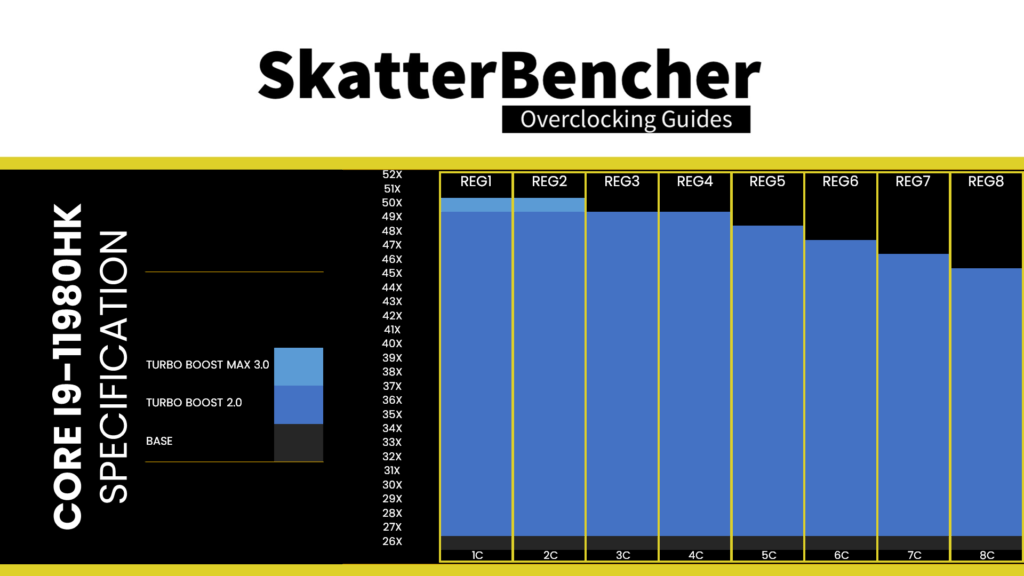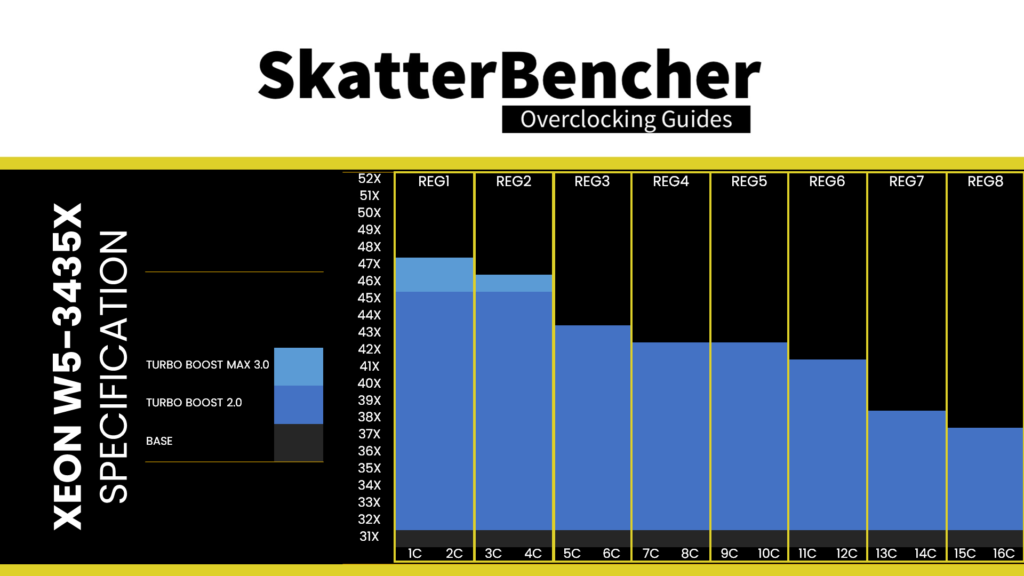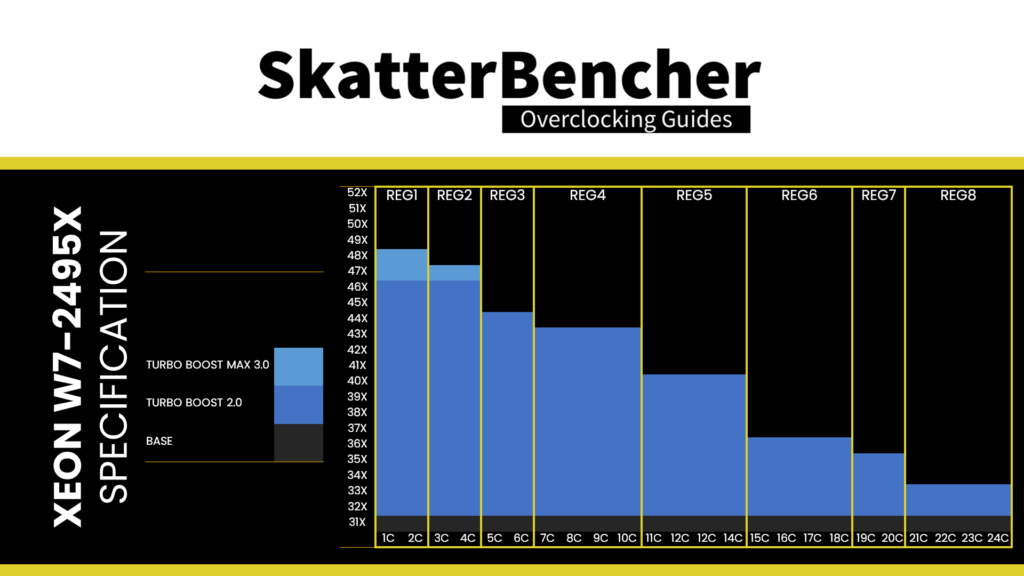Intel Turbo Ratio Limit regulates the Turbo Boost frequency of an Intel processor based on the number of active cores.
Intel processors usually have two types of CPU frequencies specified: the base frequency and the Turbo Boost frequency. The base frequency is also known as the “Maximum Non-Turbo Ratio” whereas the turbo frequency is usually referred to as the Turbo Ratio Limit.
The Turbo Ratio Limit is called a limit because it restricts the operating frequency rather than targets a frequency. Processors like the 14th gen Raptor Lake Refresh have an upper core frequency ratio of 120X. Without the ratio limit, the CPU would boost its frequency all the way to the maximum frequency. However, the Turbo Ratio Limit specifies an upper ceiling to the boost frequency.
The tool is pretty flexible and can be programmed for various scenarios. The ratio limits are defined in the processor’s Machine Specific Registers (MSRs). Specifically, MSR 1ADh is used for the Turbo Ratio Limit configuration.

The 1ADh MSR has 8 registers where two parameters can be defined.
- The Turbo Ratio Limit
- The number of active cores
For mainstream platforms where the top SKU has no more than 8 P-cores, like the Core i9-11980HK, these registers are configured from 1-active P-core to 8-active P-cores. However, on platforms with core counts beyond eight cores, we can configure each register by target Turbo Boost Ratio and the number of active cores.



Furthermore, on hybrid designs like Alder Lake, Raptor Lake, or Arrow Lake, which all feature a combination of P-cores and E-cores, the Turbo Ratio Limit configuration is specified by core type. In other words: the applied ratio limit for the P-cores is independent from the limit of the E-cores.
Note that configuring the turbo ratio is not the same as configuring each core individually. When using turbo ratio, we determine an overclock according to CPU usage. For example, if a workload uses four cores, the CPU determines which cores should execute this workload and applies our set frequency to those cores.
The Turbo Ratio Limit configuration also has a couple of rules that must be followed:
- Each register must define by a target ratio and a number of active cores
- The minimum allowed ratio limit is the maximum non-turbo ratio plus 1
- The maximum allowed ratio limit is the maximum defined highest ratio (which can differ between architectures)
- On modern CPUs that’s 85X or 120X using extended ratio mode
- The ratio limit a register must be equal to or lower than the ratio defined for the previous register
- E.g. we cannot define 60X for up to 1 active core and 62X for up to 4 active cores.
- The core count of a register must be equal to or lower than the ratio defined for the previous register
- E.g. we cannot definer register 1 to define the ratio for up to 5 active cores and register 2 to define the ratio for up to 2 active cores
- The last register must always define the ratio limit for the highest available active cores of the processor SKU.